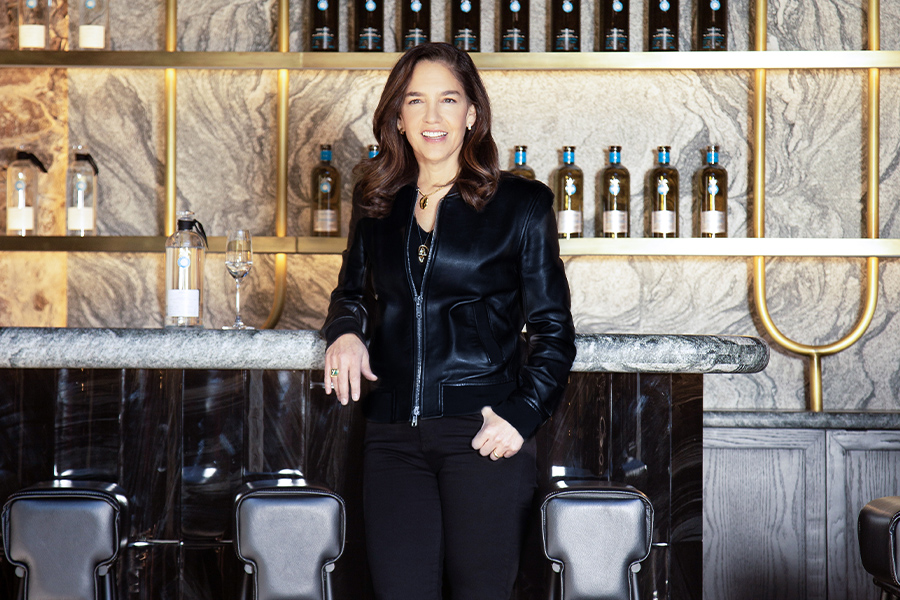How did you come to start your own firm?
Jeremy Levitt: We met while working together at AvroKO. We became fast friends and were assigned to develop a few very cool projects together within the first week of my working there. We had an instant flow. Most importantly, we had a ton of fun designing together and, once we started seeing our ideas come to fruition, it was incredibly fulfilling. Plus, we share the same interests, drive, and work ethic, which contribute to the success of our business.
Biggest obstacle of owning your own firm?
Andrew Cohen: When we first started [in 2011], we faced various points of adversity from clients who attempted to push us around, recognizing the youth of our firm. We learned that if we work hard and keep up our end of the bargain, our results would prove that we should not be taken for granted.
Big break?
JL: Atera was definitely the project that put us on the map. What initially started as a six-week flip turned into a six-month project where the client essentially said, ‘You’re the designer, don’t screw this up,’ and left us to do our thing. The autonomy was both a stressful and exciting challenge, as we were clear about the level of attention [chef Matthew Lightner] would be getting and, in turn, the restaurant’s interior design. We put our blinders on and just worked our asses off to create what we felt was right for the space, for the chef and his culinary approach, and for us as designers.
Tell us about your design process.
JL: Andrew has a master’s in architecture and has had experience working in retail and hospitality-focused wood shops and leather studios, whereas I studied industrial design and crafts and was trained mainly in furniture and lighting design, with a minor in interiors and some abstract training in architecture as well. The core of how we developed our company and process was based around us designing together—splitting off for a bit while he focuses more on the technical, architectural side of the process and I focus on FF&E development. However, we try to work back to back on all of it to maintain a distinctive aesthetic, shared vision, and holistic approach to our designs.
A favorite project in your portfolio?
JL: It’s hard to say which single project best showcases us. That said, if we were forced to choose, the Grey [in Savannah] will always hold a special place in our hearts. Yet, projects like Scampi [in New York] or the Thompson Nashville express a clear direction that we’ve currently honed in on.
How do you overcome challenging projects?
JL: Scampi in New York had a few challenges. However, more interesting was a construction conundrum we faced with the building’s existing architecture. We had to figure out how to work around irregularly cascading soffits that contained equipment from the apartment building above, which could not be altered in any way due to time and cost. What seemed like an unsightly challenge created some special features in the restaurant. The abnormal soffit configuration worked successfully to separate the main dining area from the frontal bar area, as well as provided the backbar with a unique corner formation. This acts as the focal point upon entry into the restaurant and supports perpendicular shelving that has been applied in a beautifully asymmetrical arrangement. It happens to be one of our favorite backbars that we’ve developed.
What’s on the boards?
JL: We’re in construction on a very exciting project in Chicago with One Off Hospitality and Underscore Hospitality, the Pacific Standard Time restaurant, which was inspired by the beautiful architecture of Malibu ranch homes in the 1970s. We’ve also been brought in for another ground-up Thompson Hotel in the Navy Yards in Washington, DC that is well underway and is looking pretty insane—in a good way, of course.
Lessons learned from working together?
JL: Understanding that we each have separate ideas and agendas at times, personally and professionally. But in the end, we always have to agree and we never leave a disagreement or decision unresolved. We know each other well enough that we respect the fact that when one of us feels particularly strong about something that it’s usually a direction worth pursuing. We trust our instincts and it works well.
How has your firm changed over the years?
JL: We went from being a two-man show to a team of 20. We are thoughtful about the speed of our growth and make sure that we don’t expand too far beyond a certain number. We love the size of our firm because it enables us to have a good handle on the quantity and types of projects we take on at any given time. Our staff is incredible, so our capabilities are vast and our creativity relentless.
What’s one thing you know now that you wish you knew in the beginning?
JL: We would have developed a more streamlined process earlier on. We learn from every single design challenge. The key is to carry these lessons forward and use the experiences to positively influence future projects.
Why is two better than one?
AC: We can divide and conquer on so many levels, be it design perspectives, client relationships, business development, or presence in the office while the other is out in the field. Functioning with two heads is far more sustainable and a hell of a lot more fun.


